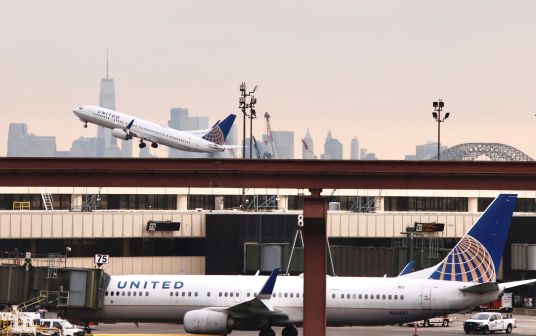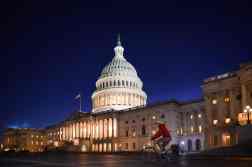The first governmentwide automated-vehicle principles are ready for agencies

Transportation Secretary Elaine Chao announced the first set of governmentwide automated vehicle (AV) principles to guide agencies in coordinating research, integrating the technology and avoiding burdensome regulations.
Chao outlined the 10 principles Wednesday at the Consumer Electronics Show 2020 in Las Vegas, part of a joint White House and Department of Transportation effort dubbed “AV 4.0: Ensuring American Leadership in Automated Vehicle Technologies.”
In 2017, DOT provided voluntary guidelines for testing and safety called AV 2.0 and the following year followed up with AV 3.0, addressing development across all surface transportation modes.
“AV 4.0 unifies AV efforts across 38 different federal agencies and departments and independent agencies and commissions and executive offices of the president. You get the drift,” Chao said. “This document and set of guidelines recognizes the value of private-sector leadership in AV research, development and integration. This kind of innovation requires appropriate government oversight to ensure safety, open markets, strategic allocation of public resources, and of course protection of the public interest.”
More than 80 companies now test AVs across 34 states, necessitating further guidance, she said.
The 10 principles are divided among three core interests:
Protect users and communities.
AVs aren’t advanced enough for widespread deployment, so agencies need to 1) prioritize safety, 2) emphasize security and cybersecurity, 3) ensure privacy and data security, and 4) enhance mobility and accessibility, Chao said.
Promote efficient markets.
The federal government shouldn’t pick AV winners and losers, so agencies must 5) remain technology neutral, 6) protect American innovation and creativity, and 7) modernize regulations, Chao said.
No. 6 involves protecting intellectual property, while No. 7 accepts AV tech is quickly evolving.
“Regulations are needed,” Chao said. “But when they become obsolete, irrelevant, outdated, they need to be changed.”
Facilitate coordinated efforts.
This will be accomplished by having agencies 8) promote consistent standards and policies, 9) ensure a consistent federal approach and 10) improve transportation system-level effects.
AV 4.0 also outlines agency efforts to research and regulate AVs for the benefit of the private sector and academia.
Agencies key to surface transportation AVs are the National Highway Traffic Safety Administration, Federal Motor Carrier Safety Administration, Federal Transit Administration, and Federal Highway Administration.
But they’re just the beginning.
While NASA’s focus is space exploration, its research includes technologies like human-system integration and system-level autonomy to remotely monitor and supervise planetary rovers that drive autonomously. AV companies are developing similar systems, according to the guidance.
The U.S. Postal Service operates the largest civilian fleet at more than 200,000 vehicles and could improve operational efficiency and safety through automation. Three ongoing agency pilots involve a prototype for automating rural delivery, a request for information on an automated mail delivery vehicle, and an automated semi-truck proof of concept between major distribution centers in the Southwest, where a driver and safety engineer are present.
And the Department of Energy is developing AV technologies that will improve the energy efficiency of the overall transportation system. For instance, the 21st Century Truck Partnership in collaboration with the Department of Defense, DOT, Environmental Protection Agency, and industry involves information sharing around internal combustion engines, electrified powertrains, operational efficiency, and safety.
Agencies like DOT will continue to issue AV guidance and conduct research and pilots, Chao said.






